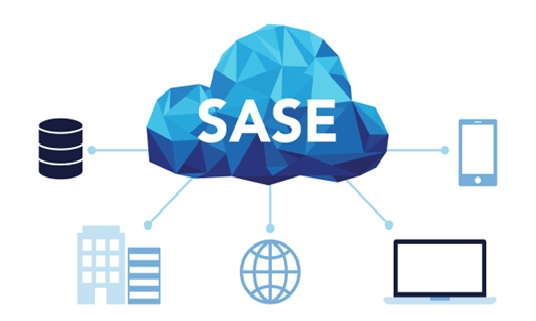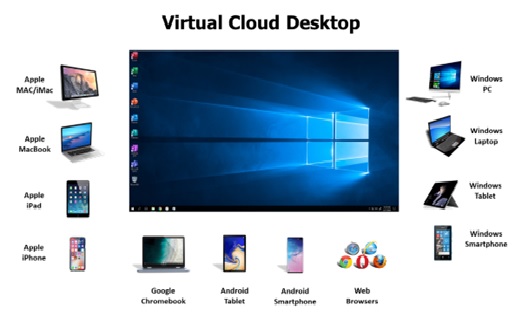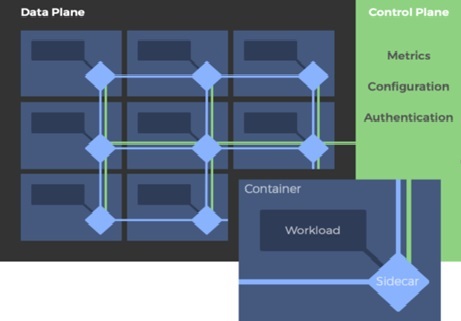Identity as a Service (IDaaS)
Identity as a Service, or IDaaS is cloud-based authentication built and operated by a third-party provider. IDaaS companies supply cloud-based authentication or identity management to enterprises who subscribe.
The X-as-a-service model in information technology is easy to understand. It means some feature is being delivered or served to a company through a remote connection from a third-party provider, as opposed to a feature being managed on site and by in-house personnel alone. Think of local email, such as Microsoft Outlook or Thunderbird, operating primarily on one's own computer versus cloud email, such as Gmail, being provided to users as a service through web connections. Identity, security, and other features can similarly be provided as a service.

Figure 1. Identity as a Service (IDaaS)
Identity as a Service (IDaaS) is shown in Figure 1. or IDaaS, is an application delivery model (like software-as-a-service, or SaaS) that allows users to connect to and use identity management services from the cloud.
The Next Generation Solution: IDaaS
Instead of relying on databases and spreadsheets to track identity, use Identity as a Service. This approach to identity management recognizes your changing work habits. Need access to a dozen SaaS apps like Salesforce, Office 365 and beyond to get your work done? The identity management solution you choose needs to keep up with that expectation. After all, your identity management is only as strong as your weakest link. If you have critical SaaS tools or a group of users like contractors that are not covered by your identity solution, your organization faces increased security risk.
What about the challenge of staying current with employee changes? For example, if a user moves from sales to customer success, they will need different tools and access. When you use Identity as a Service, you will have a flexible solution that keeps pace with those changes. For example, you can set up standard profiles for “customer success” employees so they can all start work with the same permissions.
An identity service stores the information linked with a digital entity in a form which can be managed and queried for further utilization in electronic transactions. Major core functions of Identity Services are:
- A data stores.
- Query Engine.
- Policy Engine.
IDaaS Requirements
IDaaS in cloud computing combines many essential IAM features into a single platform. To be an effective platform, the IDaaS solution must support:
- Single sign-on (SSO)
- Multi-factor authentication (MFA)
- User identity management
- Access provisioning capabilities
- Cloud directory services or directory integration
Benefits of Identity-as-a-Service (IDaaS)
- Reduce Risks: Provides multiple security methods of accessing the application.
- Cost Effective: IDaaS is cost-effective and quickly set up by the service provider. It makes things less complicated and frees the IT staff from core business initiatives.
- Improve User Experience: It helps users from password fatigue and allows users to access the application consistently help of a single set of credentials.
- Easily Setup: IDaaS is easy to set up and configure at a lower price.
References:
- https://www.okta.com/identity-101/idaas
- https://www.sailpoint.com/identity-library/identity-as-a-service
- https://www.avatier.com/blog/identity-as-a-service-idaas/
- https://www.geeksforgeeks.org/identity-as-a-service-idaas-as-a-cloud-based-service/
- https://www.strongdm.com/blog/identity-as-a-service
- https://www.mygreatlearning.com/cloud-computing/tutorials/identity-as-a-service-idaas
Cite this article:
Cite this article: Gokula Nandhini K (2023), Identity as a Service (IDaaS), AnaTechMaz, pp.82















